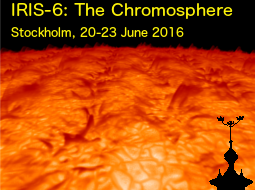Speaker
Joel Allred
(NASA/GSFC)
Description
During solar flares, copious electrons are accelerated to
high energies. These travel
along magnetic field lines in the Sun's atmosphere,
colliding with and heating the
ambient plasma. In addition to this direct heating, these
particles induce a return
current that further heats the atmosphere via resistive
dissipation. The return
current produces an electric field that balances the
electric field produced by the
flare-accelerated electrons. These electrons will be
decelerated by the return
current electric field, but that alters the
flare-accelerated electron spectrum,
which in turn alters the return current. Thus, the
propagation of these high energy
electrons and their response in the presence of the return
current is a coupled
non-linear problem. Additionally, return current heating is
dependent upon the plasma
density and temperature and, therefore, is coupled with the
hydrodynamic response to
the flare. To self-consistently account for these processes
requires a model that can
simulate how the flare-accelerated electrons, return
current, and hydrodynamic state
of the solar atmosphere affect each other. Here we report
on such a model. We have
produced simulations of the radiative hydrodynamic response
of the solar atmosphere
to flare heating using the RADYN code. RADYN has been
coupled with an additional code
that solves the Fokker-Planck kinetic theory, which
describes the interaction of
flare-accelerated particles with the return current as well
as with the ambient
plasma. We specifically study the response of the solar
chromosphere where a
majority of flare heating occurs.
Primary author
Joel Allred
(NASA/GSFC)

